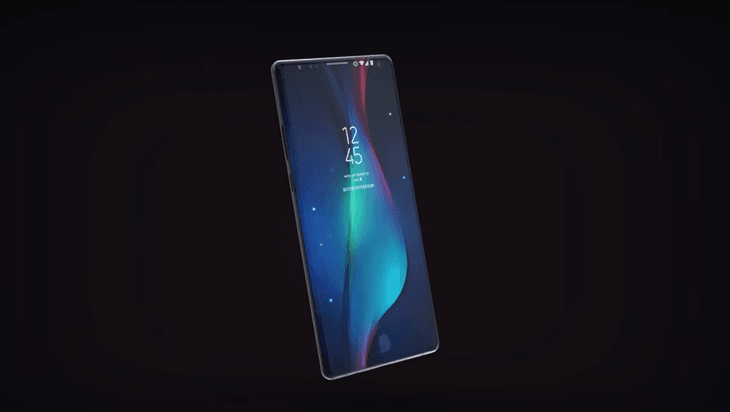Samsung has just unveiled the Galaxy S9. The latest flagship smartphone hasn’t even hit the store shelves yet, and Samsung has started talking about its future flagship device. We know the Korean company is going to launch a Galaxy Note 9 in the second half of this year. Now Samsung’s mobile business chief DJ Koh has confirmed that the company would launch an upgraded Bixby 2.0 AI assistant with the Galaxy Note 9 later this year.
During a press conference on the sidelines of the Mobile World Congress (MWC), Koh told media that the next generation of Bixby should be ready to launch with the Note 9. In October last year, Samsung had said that the Bixby 2.0 would be a “bold reinvetion” of the company’s proprietary virtual assistant. According to the Yonhap News Agency, Samsung is currently testing the beta version of Bixby 2.0 with more than 800 partners.
DJ Koh said during the press conference that Samsung focused on “a fast rollout to the market” with the Bixby 1.0. Samsung had introduced Bixby when it was still in its infancy with half-baked features. The digital assistant has become more powerful with the Galaxy S9 and S9 Plus, but expanding the ecosystem was difficult, said Koh. The next-gen Bixby 2.0 will focus on expanding the ecosystem to support a “wider scope of voice assistant features.”
Samsung usually refreshes the Galaxy Note series in August or September. So, we can expect the Note 9 to launch around the same time. The upgraded Bixby will not be restricted to just smartphones as Samsung plans to make it available across its entire ecosystem of products. The Korean company is expected to launch a Bixby-enabled QLED smart TV next month. It will also launch a Bixby-based smart speaker in the second half of this year.
“The ultimate goal is make it ubiquitous,” says Samsung. The company is unique in that it has an entire range of electronic products from TVs to washing machines to smartphones to PCs to refrigerators to air conditioners. The Bixby 2.0 will have upgraded speech recognition capabilities.
Samsung’s head of software & AI Eui-Suk Chung said at the conference that the revamped AI assistant will be able to recognize individual voices when there are more than one users. It will allow the virtual assistant to give personalized answers to each individual. Eui-Suk Chung did not give a specific example, but we can expect Bixby-enabled TVs, smartphones, and refrigerators to allow different people in your family to set up profiles.
Samsung will also reportedly do away with the “Hi, Bixby” trigger before every command. It will allow for a more natural and easy communication between the device and the user, taking some friction out of the process.
The newly launched Galaxy S9 and S9 Plus offer clues about the Galaxy Note 9. Though the Note devices have their own unique features such as the S Pen stylus, they tend to borrow a few elements from the Galaxy S handsets. Samsung also uses the Note phablets to experiment with new features. Just like the Galaxy S9 Plus, the Galaxy Note 9 would have a vertically arranged dual camera system on the back. The fingerprint scanner will also be relocated to below the camera module.
It is too early to say whether the Galaxy Note 9 would feature the optical fingerprint sensor. Samsung has been working on the feature for years, but it is still facing issues with low yield rates and security. If Samsung manages to add the in-display fingerprint solution to the Galaxy Note 9, the rear-mounted fingerprint reader would disappear. We can also expect the Note 9 to borrow the Galaxy S9’s Intelligent Scan feature that combines data from the iris scanner and facial recognition to enhance security.
Samsung has “reimagined” the smartphone camera with the Galaxy S9 and S9 Plus. The Note 9’s camera would be as good as the S9, or even better. The Galaxy S9’s main camera has a variable aperture of f/2.4 and f/1.5. The aperture changes automatically depending on the lighting conditions to take the best possible picture. You can also change the apertures manually in Pro mode. The S9 also comes with a multi-frame noise reduction feature to reduce noise by more than 30%.
The Galaxy Note 9 is also expected to borrow the AR Emoji and super slo-mo features from the Galaxy S9 and S9 Plus. The AR Emoji uses the selfie camera to make a caricature of your facial expressions that you can customize with hairstyle and clothing options before sharing with your friends. The super slo-mo feature allows you to capture slow motion videos at 960 frames per second and 720p resolution. It includes a motion detector to automatically start recording when there is movement.
Among other things, the Galaxy Note 9 is expected to feature a 3.5mm headphone jack, a USB Type-C port, and an S Pen stylus. It will likely be powered by the Snapdragon 845 or Exynos 9810 chips depending on the market.





